Secrets from a sommelier:
Sandia Chang, Kitchen Table co-founder and award-winning sommelier, shares the tips and tricks for mastering wine service at home.
9 November 2021
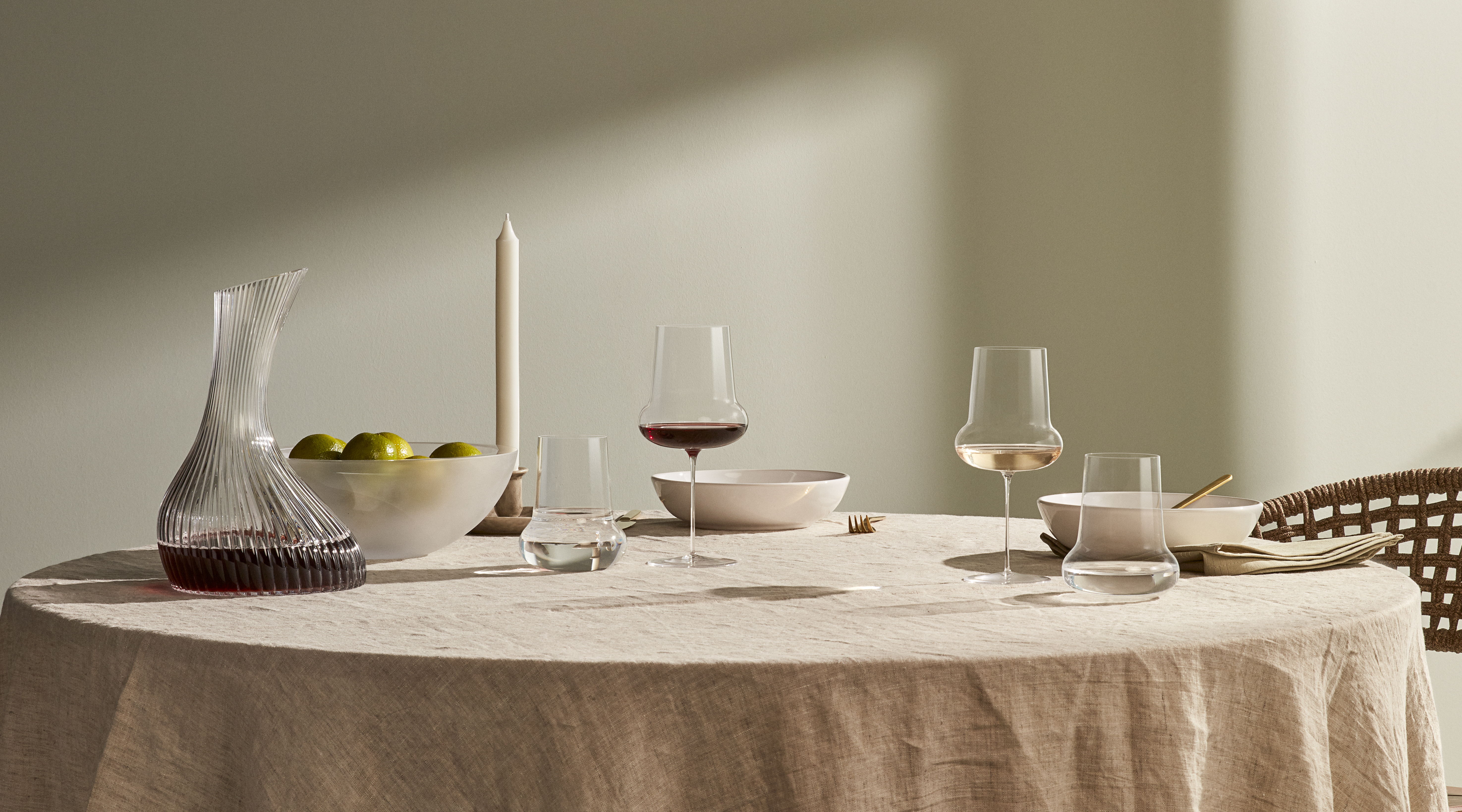
TO DECANT OR NOT TO DECANT
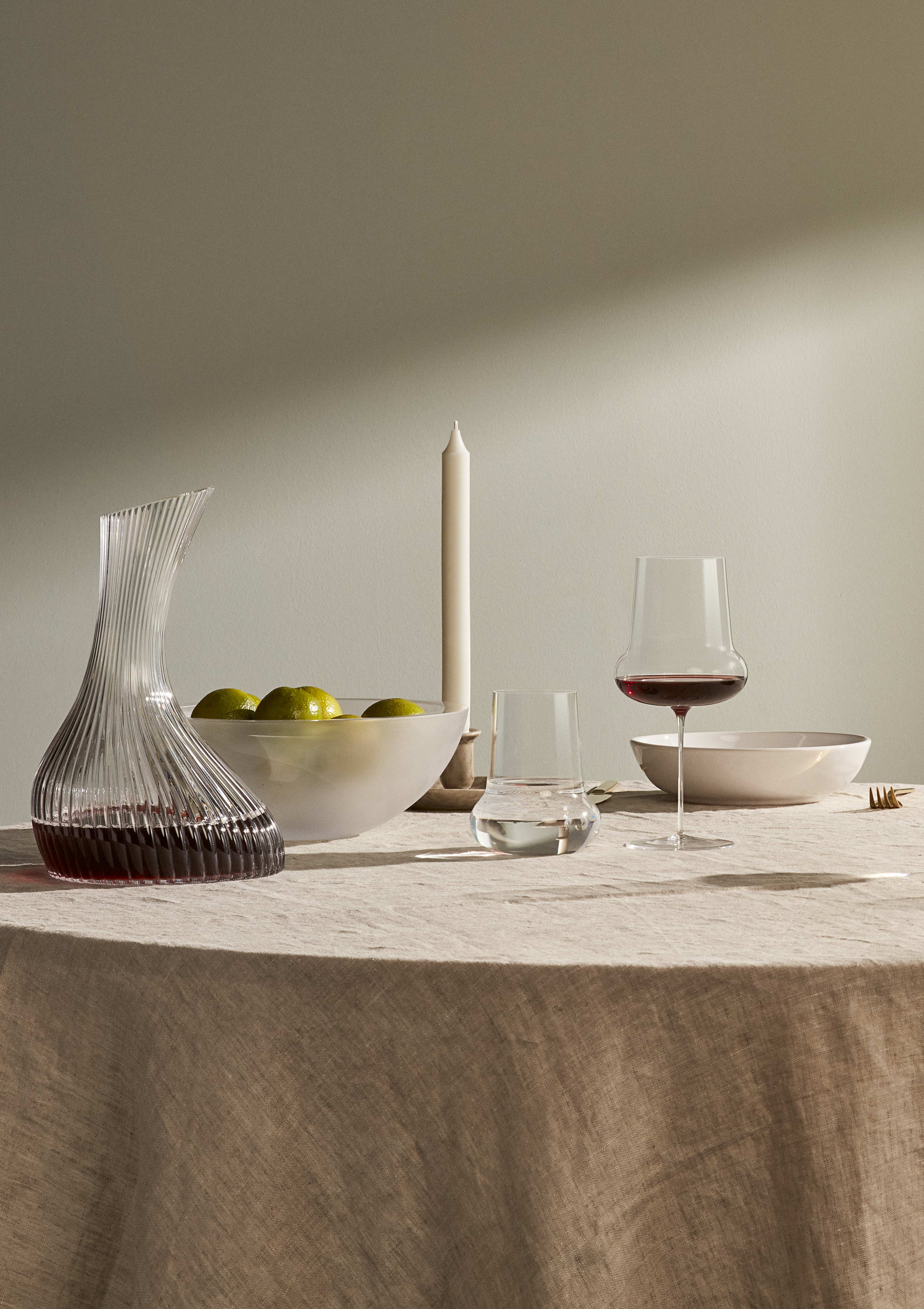
Tumbler Set of 2, €85
"There are two key reasons for decanting wine: removing sediment and exposing to oxygen. For the former, hold a light up to the bottle so you can see a wine's clarity as you pour. Maintain a steady pace at 45 degrees, stopping as soon as you see sediment clouding the neck of the bottle. Allowing the bottle to stand for a few hours before decanting will ultimately minimise waste.
For the latter, aerating a wine helps to mellow over-aggressive tannins. It's normally essential for full-bodied reds like Cabernet Sauvignon and Malbec, but if a wine tastes great from the bottle, decanting isn't always necessary. See what works for you!
In terms of how long, a simple rule of thumb is 30-45 minutes, but taste every so often to see how it suits your palate.
CHOOSING THE DECANTER
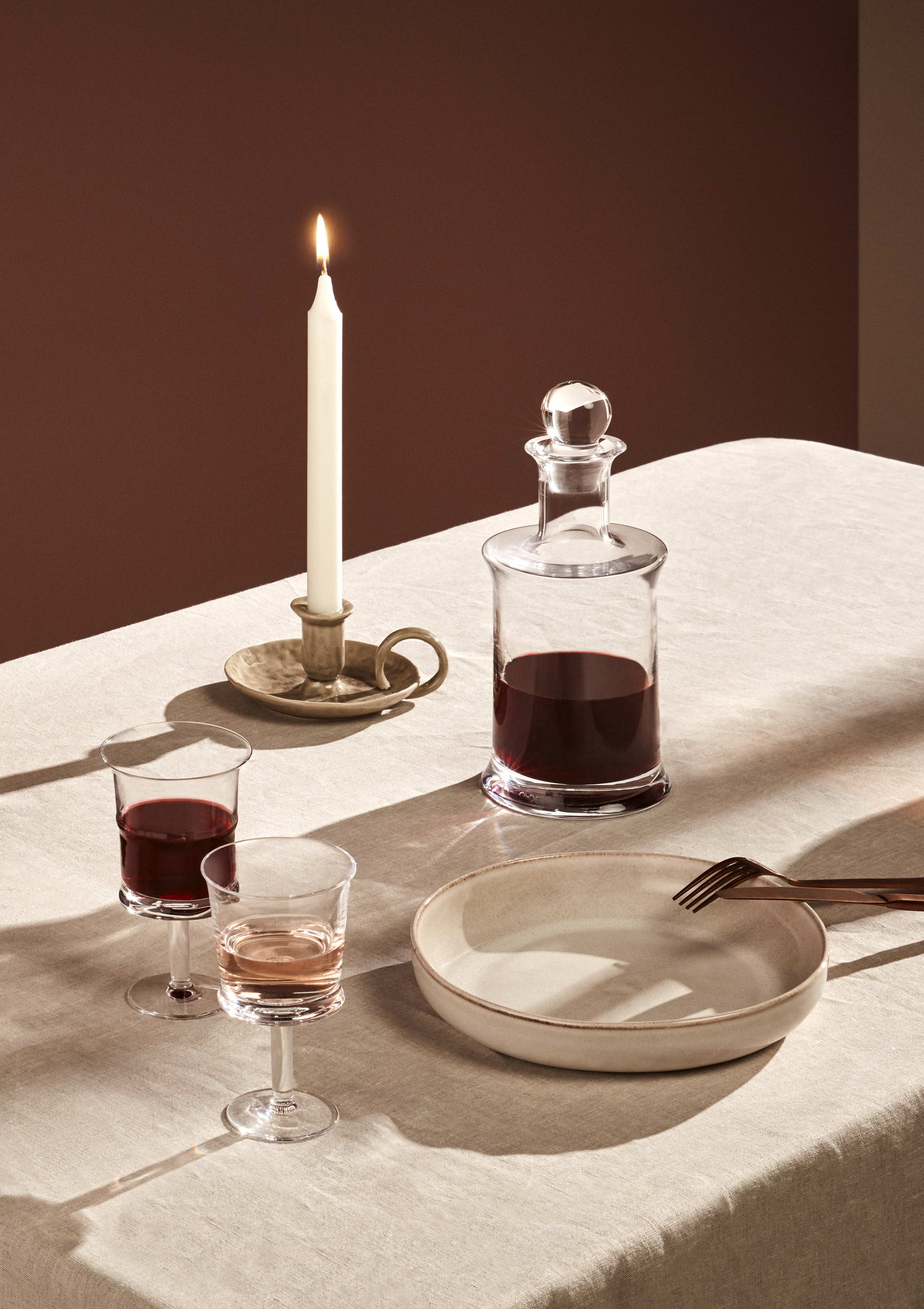
"Decanters with a wide base and nipped-in neck work best, allowing a large surface area to come into contact with oxygen whilst ensuring fragrant aromas don't dissipate. Designs with stoppers are good for when you don't expect to finish the bottle, keeping the red fresher for longer for the coming days. There are even marble-based options these days, a novel concept for decanting white wine. Typically chilled in the freezer first, they'll keep the contents cool and make for a conversational tabletop addition."
HOW TO POUR
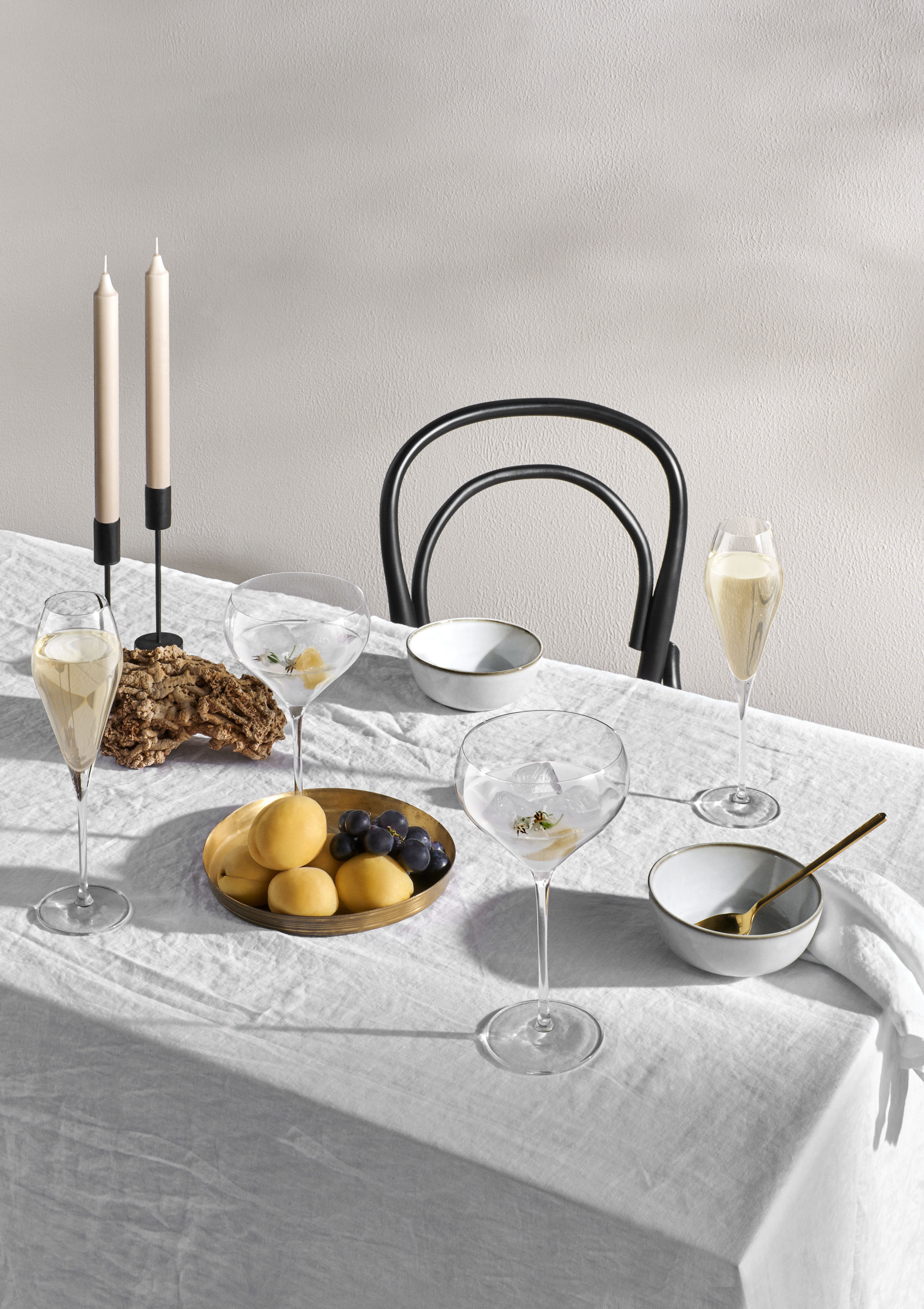
Cocktail Glass Set of 2, €27
"Hold the bottle towards the base in the palm of your hand, with the label facing your guest, and maintain a steady pour to avoid any splashes. Twist as you finish serving to avoid drips on the table. As for how full the glass should be, I used to recommend pouring to the widest part of the bowl but there are so many unique styles now that no longer applies to most! A good rule of thumb is that white wine and rosé should fill the glass by a third, red wine by a half, and sparkling by three-quarters. The most important thing is to leave enough space for the drink to breathe and be comfortably swirled."
GLASS ETTIQUETTE
"Wine glass stems were invented to ensure that warm hands don't tamper with the drink's optimum temperature, so I'm always surprised by how many guests grasp wine glasses by the bowl. The trick is to opt for fine, light vessels as you'll feel in control of these when swirling and tasting, even when held towards the base of the stem. Avoid heavy, thick-cut glasses where possible as these can start to feel precarious and unbalanced."
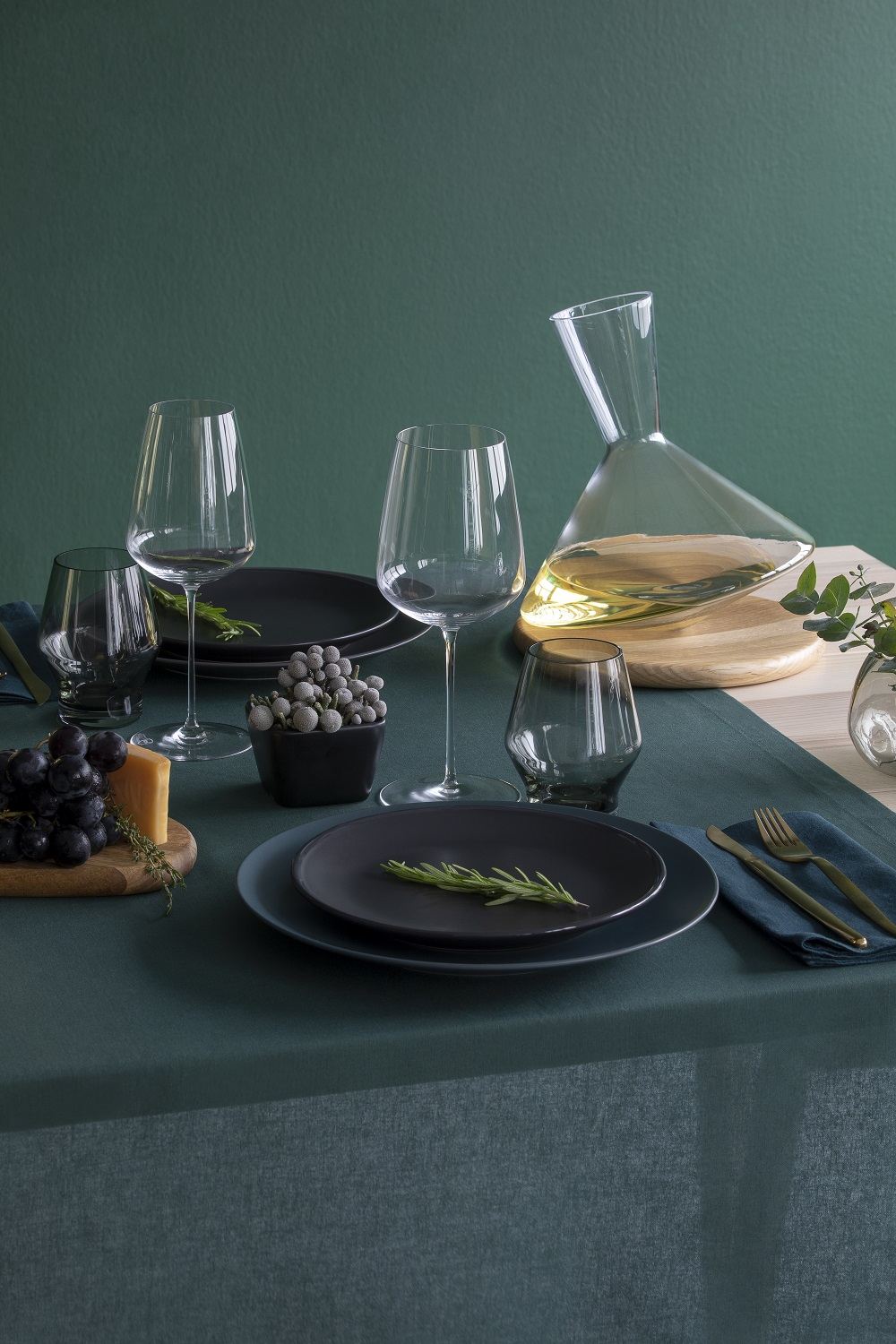
Balance Wine Decanter, €90; Beak Tumbler Set of 2, €50
FOOD FOR THOUGHT
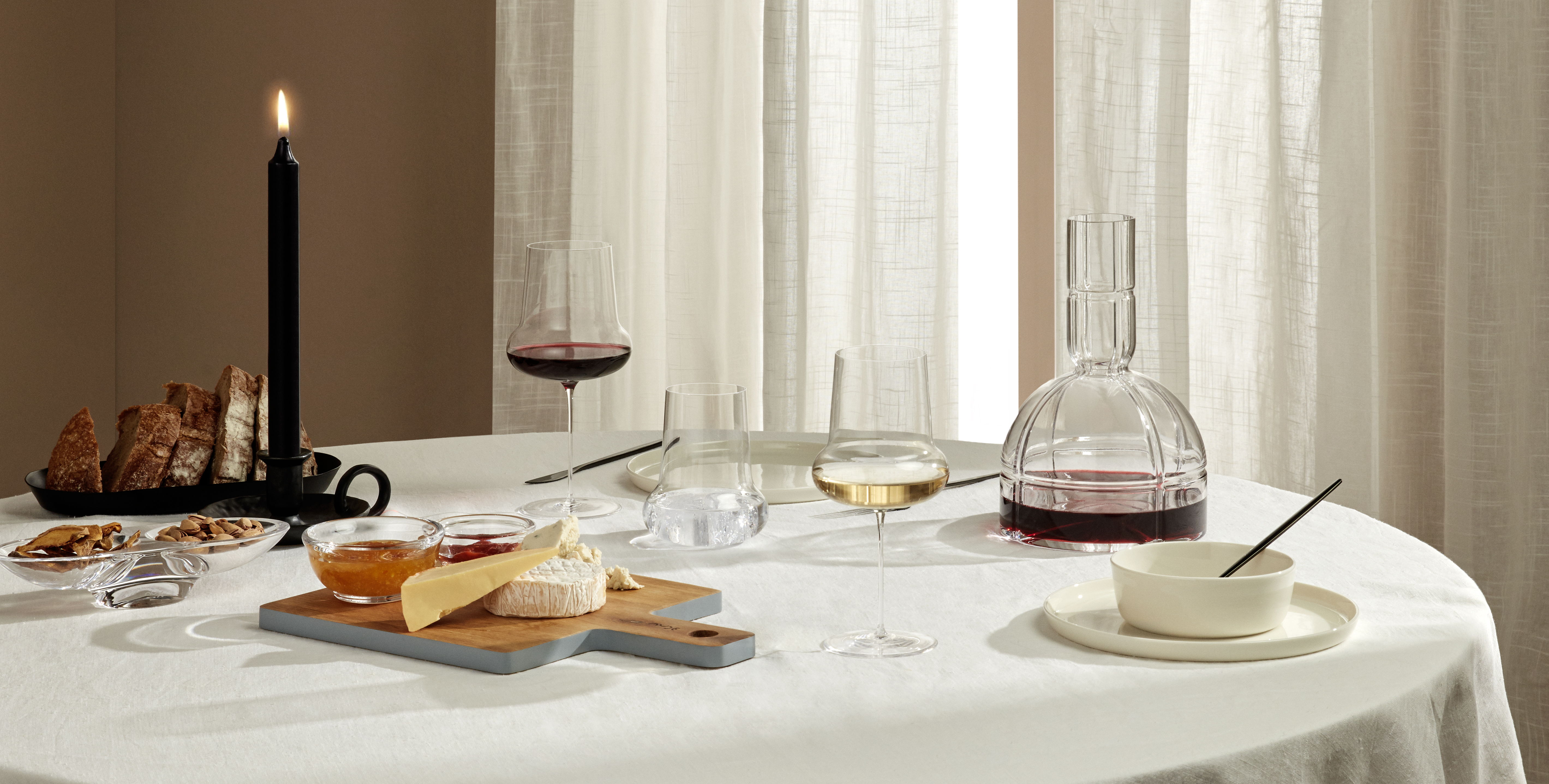
"If you're considering an at-home wine tasting, ensure you serve ample food to keep up with the steady flow of alcohol. You can't go wrong with a selection of cheeses alongside bread and fresh fruit. It's a classic option that pairs well with most wines as the fats interact with tannins to mellow them out. The trick is to stick to mild and medium styles to ensure the wine remains the star; think comté, gruyère and cheddar rather than goat or blue."
Sandia Chang's two-Michelin-starred London restaurant, Kitchen Table, uses NUDE Glass Stem Zero, a revolutionary wine glass range, featuring 19 exquisitely fine yet incredibly tough shapes that suit a type of wine instead of a specific grape, simplifying the process of selecting the best glass for the wine. Further information on the range is available here.
.jpg)
.jpg)